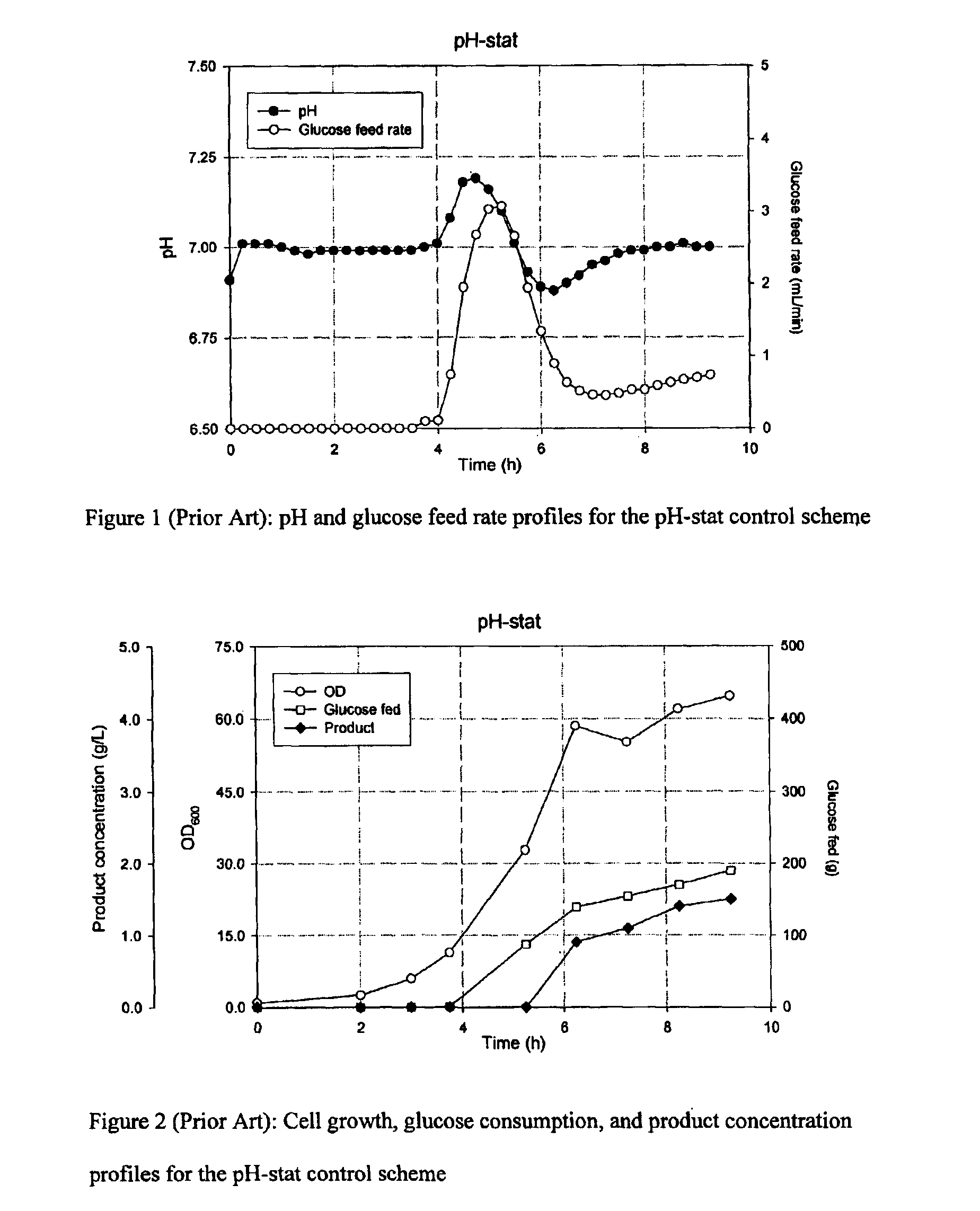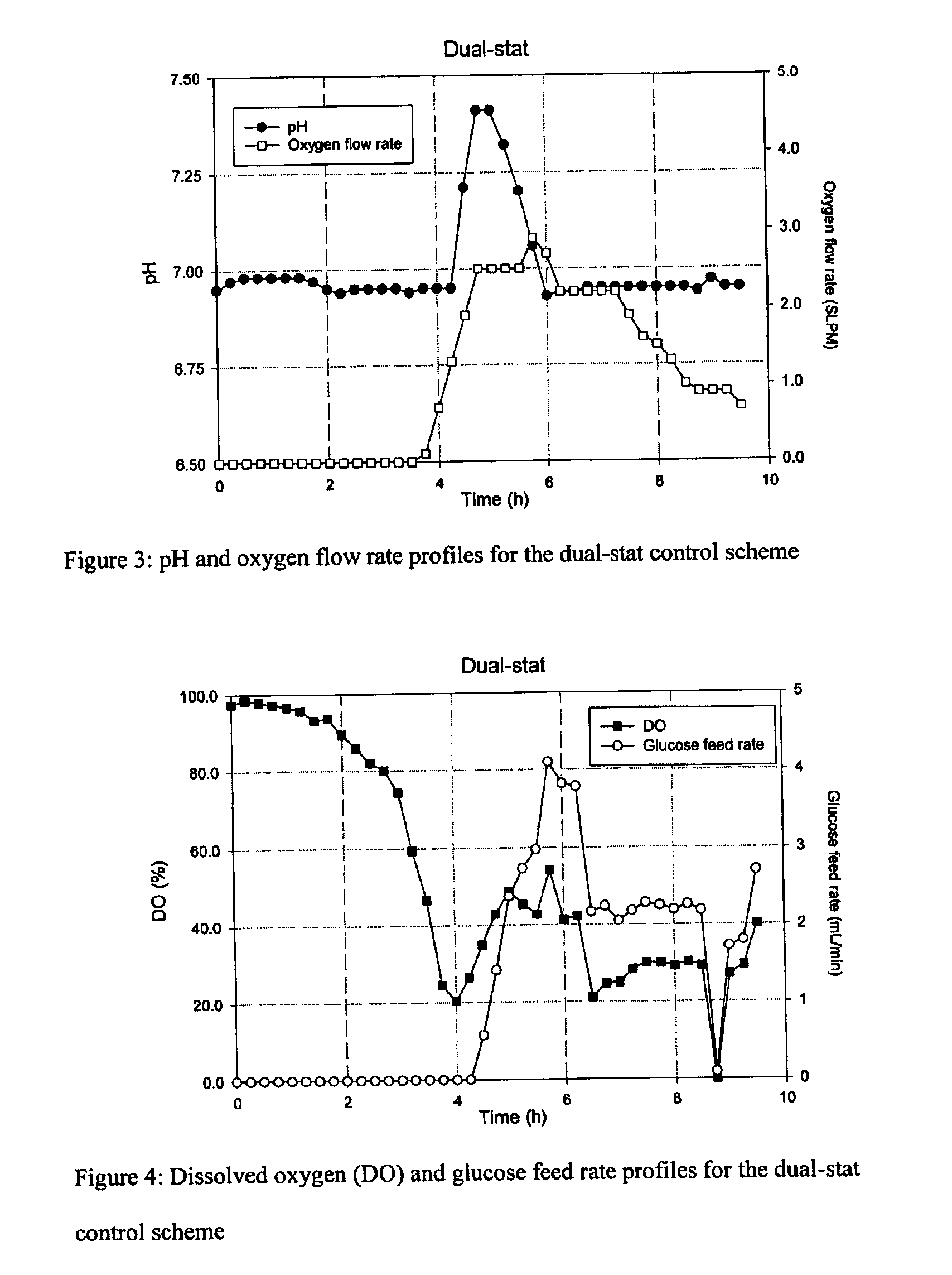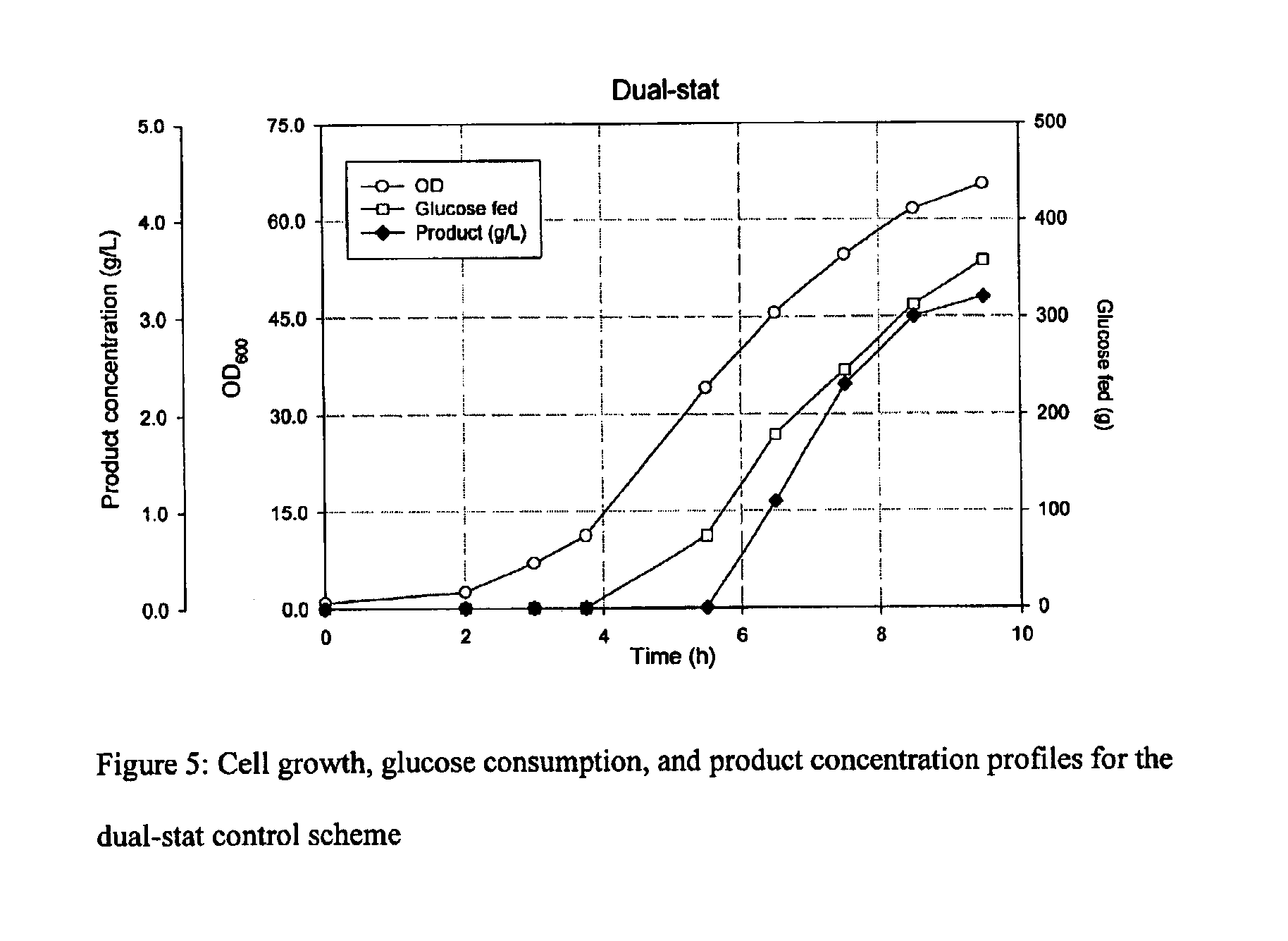Feeding processes for fermentation
a technology of feed and fermentation, applied in the field of new fermentation processes, can solve the problems of slow feedback control based on substrate measurements, growth inhibition, and inability to fully adapt to the effects of substrate measuremen
- Summary
- Abstract
- Description
- Claims
- Application Information
AI Technical Summary
Benefits of technology
Problems solved by technology
Method used
Image
Examples
examples
[0041]Table 1 demonstrate a general performances of the DO-pH dual-stat when compared to the performance of a pH-stat, open-loop and DO-stat control for a recombinant E. coli fermentation, the process for which is well known in the art.
[0042]
TABLE 1Comparison of different feeding strategies in fermentationFeedingDO-pHstrategyOpen-loopDO-statpH-statDual-statDefined++−+Media(fast(slow response)(fastresponse)response)Rich+−+ / −+Complex(may not(slower(fastMediawork)response;response)metabolic shift)MetabolicnoyesYesYesFeedback(predetermined)*The symbols “+” and “−” indicate the relative status of good vs. poor performance when various feeding strategies are applied in different media.
As can be seen, when compared to the traditional feeding strategies described earlier (open-loop, standard DO-stat, and pH-stat), features of the dual-stat strategy are:[0043]1. The new DO-pH dual-stat feeding strategy works well in culture(s) supplemented with rich complex nutrients while the DO-stat may n...
PUM
| Property | Measurement | Unit |
|---|---|---|
| fermentation time | aaaaa | aaaaa |
| pH | aaaaa | aaaaa |
| concentration | aaaaa | aaaaa |
Abstract
Description
Claims
Application Information
 Login to View More
Login to View More - R&D
- Intellectual Property
- Life Sciences
- Materials
- Tech Scout
- Unparalleled Data Quality
- Higher Quality Content
- 60% Fewer Hallucinations
Browse by: Latest US Patents, China's latest patents, Technical Efficacy Thesaurus, Application Domain, Technology Topic, Popular Technical Reports.
© 2025 PatSnap. All rights reserved.Legal|Privacy policy|Modern Slavery Act Transparency Statement|Sitemap|About US| Contact US: help@patsnap.com



